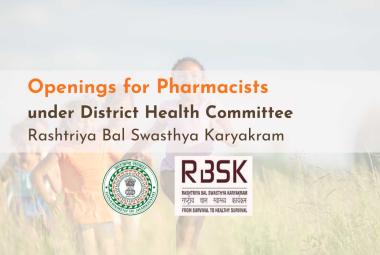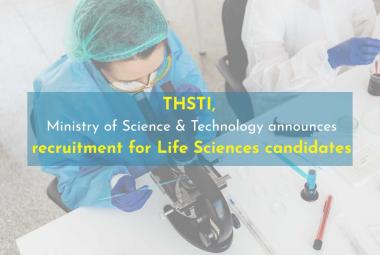About Author:
Pritish Dash
Institute of Bioinformatics and Applied Biotechnology (IBAB)
Bangalore, India
pr4evr@gmail.com
Abstract:
Evidence-based medicine (EBM) is the process of systematically reviewing, appraising and using clinical research findings to aid the delivery of optimum clinical care to patients. It is a method of healthcare decision-making that intends to combine the most reliable scientific information with individual expertise and patient preferences in order to offer the optimal diagnostic and therapeutic option for the patient. On the other hand, pharmacogenomics is a whole genome application that examines the single gene interactions with drugs. In recent years, the term personalized medicine has been introduced to represent an approach considering differences among individual patients. In modern medicine, the most important sources of evidence are clinical trials using epidemiological methods, and molecular biological and genetic methods characterizing individual patients.
This paper tries to review the rapid transformation of modern medicine from the ‘evidence-based medicine’ to ‘personalized and genomic medicine’.
REFERENCE ID: PHARMATUTOR-ART-2022
Introduction:
Evidence-based medicine (EBM) historically dates back to the mid-19th century. According to Dr. David Sackett (a pioneer in evidence-based practice), EBM is "the conscientious, explicit and judicious use of current best evidence in making decisions about the care of the individual patient. It means integrating individual clinical expertise with the best available external clinical evidence from systematic research.” There has been great progress in understanding the molecular basis of drug action and in elucidating genetic determinants of disease pathogenesis and drug response over the past fifty years. As the complexities of clinical trial increases and the data become more humongous then before, EBM is surely going to pave the road for future clinical trials. Using techniques from science, engineering and statistics, such as meta-analysis of scientific literature, risk-benefit analysis, and randomized controlled trials, it will help the clinicians to make the best decisions.
Evidences in EBM
The evidences generally considered in EBM can be broadly categorized into the following:
- Meta-analysis of randomised controlled trials: Randomised CT is still considered one of the best designs for clinical trials. Meta- analysis of RCTs provides excellent insights and evidence for EBM.
- Controlled study without randomisation: An experimental study in which people are allocated to different interventions using methods that are not random. These studies again gives a comparative evidence
- Quasi-experimental study: A quasi-experimental study is a type of evaluation which aims to determine whether a program or intervention has the intended effect on a study’s participants.
- Expert committee reports, opinions, clinical experience: Inputs for medical reviewers, IRB, and expert committee reports also provides good evidences.
Rise of the Genomic Era
The genomic era came into its full strength after the human genome project. Massive explosion of biological data resulted in the birth of Bioinformatics. Genome- wide measures of gene expression derived from DNA micro-array studies have the potential of providing information to the analysis of biological phenotype. Genomics started playing a pivotal role in evidence-based medicine. Complex diseases are now been understood in terms of various multifactor genomic elements which includes the pathogenic effects of polygenes, oligogenes, genetic polymorphism, SNPs, CNVs etc.
(Rise of humongous data from HGP and its subsequent applications in genomics: A schematic flow)
A case study
The above article published in the “New England Journal of Medicine” gives a good example for the application of EBM in genomics and personalized medicines.
Here are the key points squeezed from the above articles:
1. This paper talks about Pravastatin, one of the many statins currently used in the treatment of Hyperlipidemia.
2. Taq1B polymorphism of cholesteryl ester transfer protein (CETP) key role in HDL metabolism
3. Evidences show that B1B1 genotype demonstrate better response to pravastatin than B2B2 while B1B2 showed intermediate response. The Ile164β2 adrenergic receptor polymorphism demonstrated a more rapid progression of the disease
4. Thus, theseobservationsprovides excellentevidence that can help clinicians make more appropriate the rapeutic decisions
Conclusion
Evidence based medicine has laid agreat foundation in the questto better under standand approach diseases. Healthcare decision about an individual patient, whether using evidence from randomized trials or from molecular studies of biomarkers, decisions need to be based on reliable, good quality evidence. Evidence from molecular and genetic medicine thus improvesthearmament of evidence-based medicine, and this upgrade yields amore reliable support for our decisions in everyday practice.
References
1. Bereczki, Daniel, “Personalizedmedicine: acompetitororan upgrade of evidence-basedmedicine?” March 2012,Vol. 9,No. 2,Pages211-221 , DOI10.2217/pme.11.93
2. Besley, Jonathan, “Whatis Evidence-BasedMedicine? ”What-isseries, 2ndEdition
3. Kumar, Dhavendra,“Genomic medicine: a new frontier of medicine in the twenty first century”.Genomic Med. 2007September;1(3-7).
4. IASCT, Conference April;2013
NOW YOU CAN ALSO PUBLISH YOUR ARTICLE ONLINE.
SUBMIT YOUR ARTICLE/PROJECT AT articles@pharmatutor.org
Subscribe to Pharmatutor Alerts by Email
FIND OUT MORE ARTICLES AT OUR DATABASE









